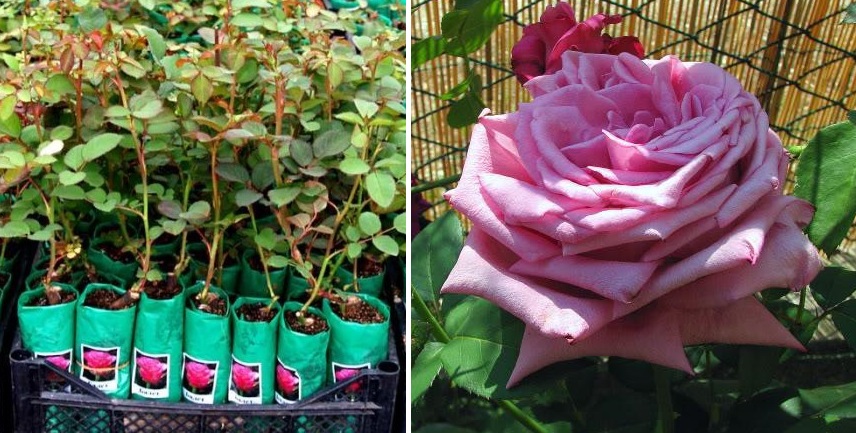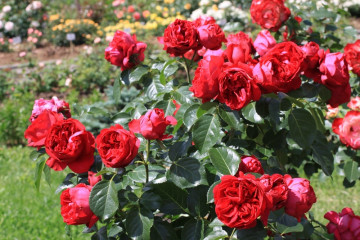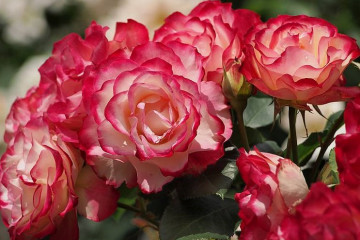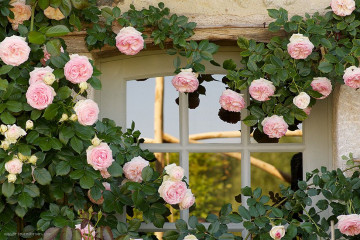Rose Claude Brasseur - characteristics of the variety
Content:
Modern selection has presented rose lovers with many varieties with the most incredible shades of flowers. Among them, the rose Claude Brasseur stands out for its dense satin lilac buds. She combined the positive qualities of many subspecies that were used in her creation, and can become a decoration for any garden.
Description and characteristics of the rose
Claude Brasseur is a hybrid tea rose, bred quite recently, in 2006. The breeders of Meilland International worked on the creation of this flower, giving it the name of the famous French actor, who was awarded the national Cesar prize for his ingenious acting.
The Claude Brasseur bush is formed from erect shoots, reaches 90 cm in height and 50 cm in width. The stems are covered with dense dark green matte leaves.
Goblet-shaped buds have up to 75 petals, and fully blooming double flowers are up to 15 cm in diameter.
The color is extremely unusual: from delicate lavender to deep purple hues. Flowers are not subject to fading in the sun and do not fall off within 2 weeks. The aroma is bright, with tangible notes of verbena and citrus.
The downside is the poor tolerance of precipitation: due to rainy weather, flower petals do not bloom, nevertheless, without losing their charm.
Rose Claude Brasseur looks equally impressive in the form of a bush and in a standard form. Suitable for cultivation in rose gardens, decoration of border and flower beds. Combines with contrasting, different colors, perennials. Stays in the cut for a long time.
Growing a flower
The variety is not afraid of direct sun, but it is advisable to protect it from the effects of the cold wind. A site with light loamy soil, loose and fertile, is suitable. It is best to plant a plant in the ground in the spring from the end of April.
The planting process includes the following steps:
- Prepare a shallow planting pit (up to 50 cm).
- Pour a drainage layer on the bottom of the hole.
- Top the drainage with soil mixed with compost and peat.
- Place the roots of the seedling in the hole, gently straightening it.
- Sprinkle the hole with earth and compact without deepening the root collar.
- Water the land around the seedling abundantly.
When planting not one, but several bushes of this variety, you should leave a distance of 50 cm between them, and between the rows 30 cm. A more frequent placement scheme threatens the appearance of fungal diseases, and a more rare one will contribute to the growth of weeds.
Rose care treatments
Claude Brasseur needs regular soil moistening: every 3-7 days, as the soil dries out. For irrigation, water is used that has been warmed up in the sun and has become warm. The obligatory action after watering is to loosen the soil under the bush, which allows to ensure sufficient air permeability.
In the spring, nitrogen fertilizers are applied under each bush, and in the summer, during the active formation of new buds, the rose is fed with specialized mineral compositions at intervals of 2-3 weeks.
The plant requires spring pruning of weak shoots, which is carried out after the snow melts. As for the preparation of this rose for wintering, it is better not to prune the shoots in the autumn, limiting ourselves to hilling the bush.
Blooming rose
Claude Brasseur is distinguished by abundant long flowering: it blooms from June to the end of September, taking breaks only in very hot weather.
Each flower stays on the bush for up to 14-15 days.
Even possible temperature changes and increased rainfall do not harm the rose. To prolong the bud formation process, it is enough to follow the care procedures described above.
Flower propagation
Claude Brasseur hybrid tea rose can be propagated using various methods. Dividing the bush can be considered the most appropriate.
To do this, the mother's rose is dug up and the bush is divided into several parts, each of which is left with at least one viable shoot with a healthy root system.
In addition to dividing, you can also use cuttings or layering propagation. Cuttings are carried out according to the usual rules. However, it should be remembered that such a plant, although it will have high regenerative qualities, will require good insulation for the winter. Reproduction by layering is carried out in the spring, cutting a sufficiently flexible annual shoot, tilting it to the ground and filling it with fertile soil.
Pest and disease control
Despite the resistance of the variety to fungal diseases, it still needs preventive measures. The risk of infection of plants with powdery mildew and black spot increases with the arrival of prolonged rains.
To protect the rose, treatment with medicinal preparations is carried out twice a season. Having found insect pests on the bushes, the infected parts are removed and burned, after which the bush is treated with an insecticidal solution.
Compliance with agricultural technology will allow the Claude Brasseur hybrid tea variety to become a decoration of the personal plot. Its neat compact bushes can be a discovery for rose growers. Resistance to cold weather and various diseases makes it possible to grow it in a temperate climate, and abundant long flowering fully pays for all the efforts made.



















